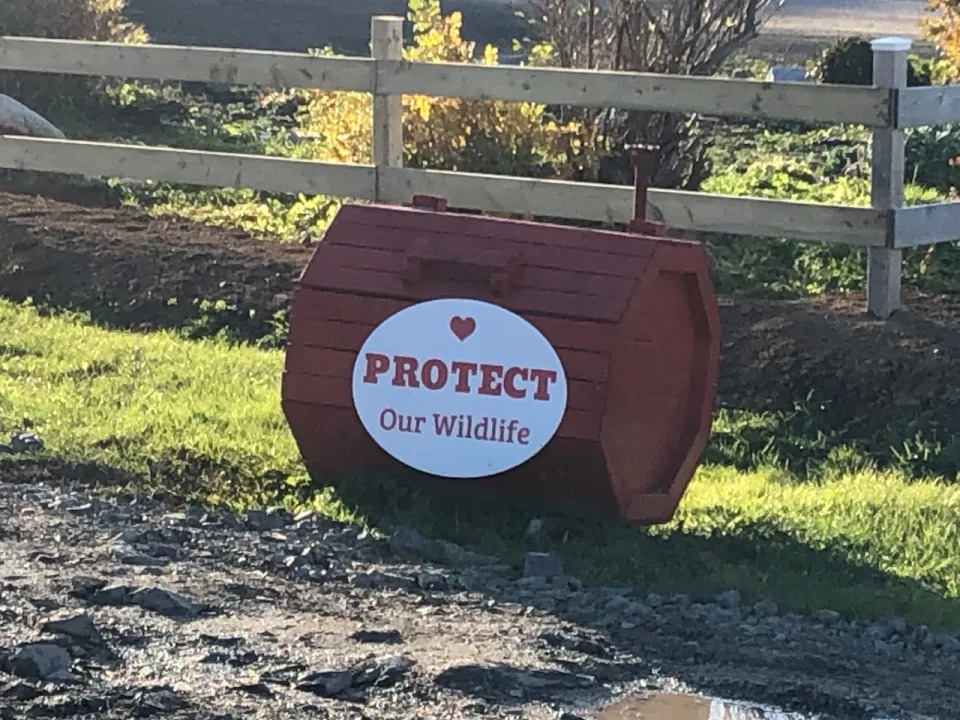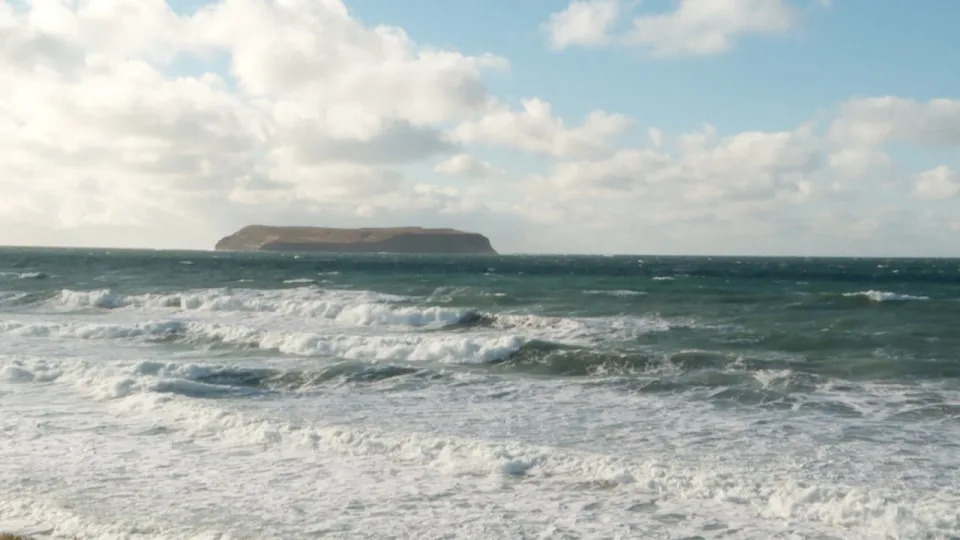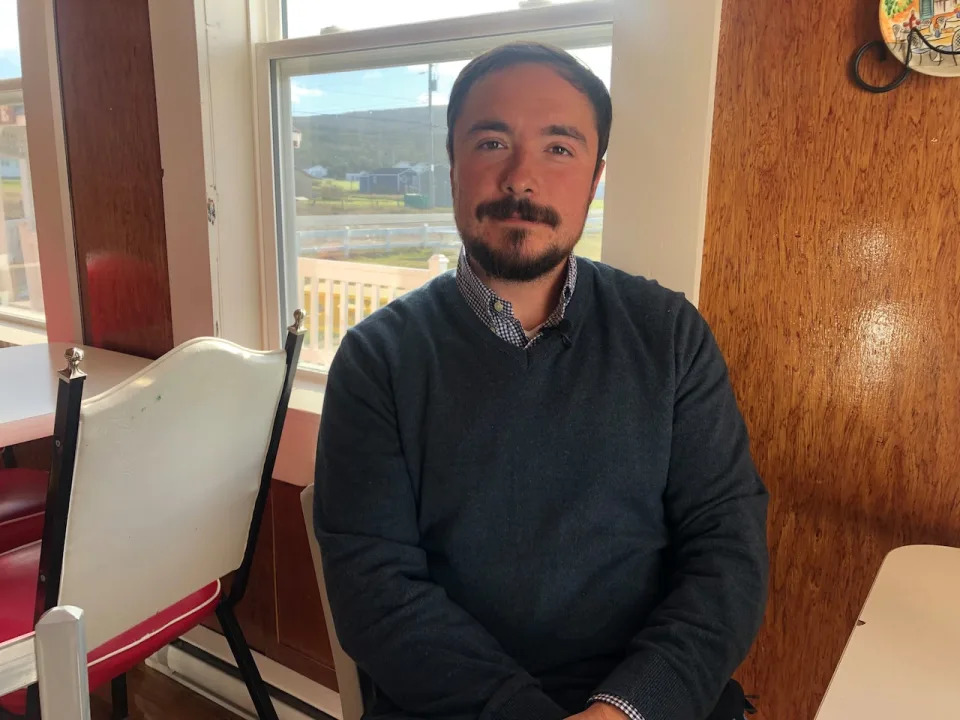NIMBY
Government mute as Port au Port Peninsula residents say wind project will eradicate towns, destroy culture
"The main thing is the people do not want it. Essentially it is the government going against the will of the people."
CBC
Wed, November 22, 2023

Tami Park-Tighe lives in Piccadilly. She runs her hair salon business there and says the amount of construction required to build hundreds of wind turbines will destroy the roads on the Port au Port Peninsula. (Colleen Connors/CBC - image credit)
Tami Park-Tighe's house is just off the twisty narrow road through Piccadilly, N.L., on the Port au Port Peninsula. Her front lawn is lined with fire wood, stacked in a perfect line.
She has lived here in this big house for 14 years: her hair salon on the left; her dad's apartment on the right.
"My dad is an 82-year-old man. This is his home. He was born and raised down the road from where we are right here," Park Tighe said.
She and her father are Mi'kmaq, and she says since she got word of the potential wind-to-hydrogen project slated for her area, she feels she'll lose touch with her history and culture.
World Energy GH2 plans on erecting 164 wind turbines, all of them 200 metres high. The company will also construct 197 kilometres of access roads behind Park-Tighe's house.
"He still cuts his trees and gets his wood. That's how we get our heat in the winter months," Park-Tighe says.
"We collect our berries on these mountains. Our water comes from these mountains. Everything is gravity-fed. When you disrupt this, there are definite repercussions that are going to happen to us."

Red and white signs plastered on dozens of garbage boxes in some communities on the Port au Port Peninsula. (Colleen Connors/CBC )
As you drive along the twisting Route 463, you'll spot large red and white signs plastered on garbage boxes at the end of people's properties. In communities like Piccadilly, Mainland, Campbell's Creek and Felix Cove, residents have posted signs that say "Protect our health," "Protect our wildlife" and "No windmills."
Inside Park-Tighe's hair salon, she wraps a curling iron cord around and around. She has clients that come to her salon from nearby Stephenville regularly. She's worried ongoing construction will destroy her business.
The company's environmental impact statement says both the Port au Port Peninsula and the Codroy Valley construction sites require 7 million kilograms of bulk emulsion explosives to install the turbines.
"Our roads are already really damaged. It is hard for us to fathom ... these heavy trucks on our roads," she said.
"It's going to affect us because we are going to have heavy trucks coming over our centre line and our roads are very narrow. There is no way people are going to make the trek out."
Mass exodus?
In Mainland, Timothy Collier sits and stares at the enormous waves out the window of the Culture and Heritage Centre. He sips his coffee and watches the whitecaps and the sea foam float up and coat the windows.
"A project of this scale, I am sure, will cause a mass exodus from this community," said Collier.
He's from this community, and says he can't sleep well unless he can hear the waves and the ocean. He's training to be a doctor and wants to open a family medical practice in the community where World Energy GH2 plans on building up to 70 wind turbines.

The waves crashing in Mainland, on the Port au Port Peninsula. (Colleen Connors/CBC )
"People don't live here because they wish to live inside an industrial development. They live here because it's rural Newfoundland," he says.
"They like to be self-sustaining to a degree. They like to have their privacy. The size of this, and the scope of the project, will just drive people away. It will lead to the death of the community. Which will be a shame."
He and Park-Tighe would like to see public hearings in their communities that include a visit from Premier Andrew Furey, so he can hear their concerns about the project.
But Furey has told CBC News he isn't privy to any of the company's inner workings, and has no control over what applications they submit or are approved for.
"I have a full wall with respect to World Energy," Furey told CBC last week.
"I don't have any insight into their activities whatsoever. With respect to the environmental process, even if I did, that's a quasi-judicial process that has input from all stakeholders. It's wrong for politicians to interfere with that process."

Timothy Collier is from Mainland on the Port au Port Peninsula. He believes the wind-to-hydrogen project slated for his backyard will cause an exodus. (Colleen Connors/CBC )
The Department of Environment and Climate Change sent a statement to CBC in response to a question about officials visiting the Port au Port Peninsula and holding a public forum.
The statement cited the ongoing environmental impact statement review and said that all public comments submitted during that upcoming process are used as part of the decision making process.
World Energy GH2 is currently amending its impact statement with government. Once the amended statement is submitted to government, there will be a 70-day review process, which includes space for public comment.
Both Collier and Park-Tighe submitted letters during the first public comment process and plan on sharing their concerns a second time.
"When that first turbine goes up, it will be the death knell of this community," said Collier, who believes the provincial government will approve the project.
"The main thing is the people do not want it. Essentially it is the government going against the will of the people."
Wed, November 22, 2023

Tami Park-Tighe lives in Piccadilly. She runs her hair salon business there and says the amount of construction required to build hundreds of wind turbines will destroy the roads on the Port au Port Peninsula. (Colleen Connors/CBC - image credit)
Tami Park-Tighe's house is just off the twisty narrow road through Piccadilly, N.L., on the Port au Port Peninsula. Her front lawn is lined with fire wood, stacked in a perfect line.
She has lived here in this big house for 14 years: her hair salon on the left; her dad's apartment on the right.
"My dad is an 82-year-old man. This is his home. He was born and raised down the road from where we are right here," Park Tighe said.
She and her father are Mi'kmaq, and she says since she got word of the potential wind-to-hydrogen project slated for her area, she feels she'll lose touch with her history and culture.
World Energy GH2 plans on erecting 164 wind turbines, all of them 200 metres high. The company will also construct 197 kilometres of access roads behind Park-Tighe's house.
"He still cuts his trees and gets his wood. That's how we get our heat in the winter months," Park-Tighe says.
"We collect our berries on these mountains. Our water comes from these mountains. Everything is gravity-fed. When you disrupt this, there are definite repercussions that are going to happen to us."

Red and white signs plastered on dozens of garbage boxes in some communities on the Port au Port Peninsula. (Colleen Connors/CBC )
As you drive along the twisting Route 463, you'll spot large red and white signs plastered on garbage boxes at the end of people's properties. In communities like Piccadilly, Mainland, Campbell's Creek and Felix Cove, residents have posted signs that say "Protect our health," "Protect our wildlife" and "No windmills."
Inside Park-Tighe's hair salon, she wraps a curling iron cord around and around. She has clients that come to her salon from nearby Stephenville regularly. She's worried ongoing construction will destroy her business.
The company's environmental impact statement says both the Port au Port Peninsula and the Codroy Valley construction sites require 7 million kilograms of bulk emulsion explosives to install the turbines.
"Our roads are already really damaged. It is hard for us to fathom ... these heavy trucks on our roads," she said.
"It's going to affect us because we are going to have heavy trucks coming over our centre line and our roads are very narrow. There is no way people are going to make the trek out."
Mass exodus?
In Mainland, Timothy Collier sits and stares at the enormous waves out the window of the Culture and Heritage Centre. He sips his coffee and watches the whitecaps and the sea foam float up and coat the windows.
"A project of this scale, I am sure, will cause a mass exodus from this community," said Collier.
He's from this community, and says he can't sleep well unless he can hear the waves and the ocean. He's training to be a doctor and wants to open a family medical practice in the community where World Energy GH2 plans on building up to 70 wind turbines.

The waves crashing in Mainland, on the Port au Port Peninsula. (Colleen Connors/CBC )
"People don't live here because they wish to live inside an industrial development. They live here because it's rural Newfoundland," he says.
"They like to be self-sustaining to a degree. They like to have their privacy. The size of this, and the scope of the project, will just drive people away. It will lead to the death of the community. Which will be a shame."
He and Park-Tighe would like to see public hearings in their communities that include a visit from Premier Andrew Furey, so he can hear their concerns about the project.
But Furey has told CBC News he isn't privy to any of the company's inner workings, and has no control over what applications they submit or are approved for.
"I have a full wall with respect to World Energy," Furey told CBC last week.
"I don't have any insight into their activities whatsoever. With respect to the environmental process, even if I did, that's a quasi-judicial process that has input from all stakeholders. It's wrong for politicians to interfere with that process."

Timothy Collier is from Mainland on the Port au Port Peninsula. He believes the wind-to-hydrogen project slated for his backyard will cause an exodus. (Colleen Connors/CBC )
The Department of Environment and Climate Change sent a statement to CBC in response to a question about officials visiting the Port au Port Peninsula and holding a public forum.
The statement cited the ongoing environmental impact statement review and said that all public comments submitted during that upcoming process are used as part of the decision making process.
World Energy GH2 is currently amending its impact statement with government. Once the amended statement is submitted to government, there will be a 70-day review process, which includes space for public comment.
Both Collier and Park-Tighe submitted letters during the first public comment process and plan on sharing their concerns a second time.
"When that first turbine goes up, it will be the death knell of this community," said Collier, who believes the provincial government will approve the project.
"The main thing is the people do not want it. Essentially it is the government going against the will of the people."
No comments:
Post a Comment